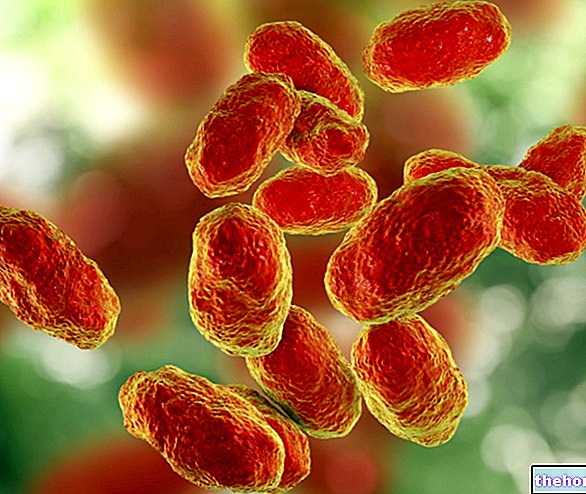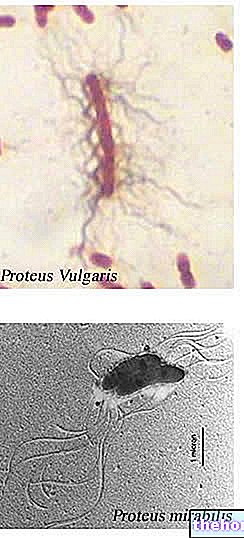Retroviruses and Cancer
Retroviruses are included in the list of pathogens potentially involved in the initiation of neoplastic forms: these viruses have conquered a prestigious role in research on the genetics of cancer in humans. For many years now, retroviruses have been at the center of scientific attention, since many of them are considered to be oncogenic viruses in all respects. Furthermore, they can be exploited to introduce genes into mammalian cells, reprogramming their activity for therapeutic purposes (therapy gene, thus inserting good genes into the cell) or technological (synthesis of useful proteins).
Upon entering a host cell, retroviruses are able to convert their genome from RNA to DNA: using the "help of" the reverse transcriptase enzyme, the virus performs the so-called retro-transcription transforming the "viral RNA into DNA." it integrates into the DNA of the host cell which is exploited for the synthesis of genome and viral structures.

Classification of Retroviruses
Retroviruses belong to 5 viral families, including that of Retroviridae is the best known.
ON THE BASIS OF THE PATHOGENICITY "€, the viruses belonging to the family of Retroviridae they are classified into three subfamilies:
- Oncoviruses: cause damage both in vitro and in vivo. Generally, retroviruses of this category are involved in the etiopathogenesis of tumor forms.
- Spumavirus: although they are responsible for cytopathic effects in vitro (set of morphological alterations assumed by the virus-infected cell), their pathogenicity has not yet been demonstrated in vivo. Some authors include the retrovirus HFV (hepatitis F virus) in this subfamily.
- Lentiviruses: these retroviruses induce progressive impairment of the immune and neuronal systems.
Human pathogenic retroviruses are:
- HIV or human immunodeficiency virus (Human Immunodeficiency Virus), belonging to the Lentivirus subfamily. Two serotypes have been identified in this category: HIV-1 and HIV-2. HIV is the causative agent of AIDS.
- HTLV or Human T Lymphotropic virus: it belongs instead to the Oncovirus subfamily. Two serotypes have been identified in this category: HTLV-1 and HTLV-2. Retroviruses belonging to this group are involved in the triggering of extremely serious diseases, such as acute T-cell leukemia, hairy cell leukemia and myelopathies (diseases affecting the spinal cord).
ON THE BASIS OF THE GENOME AND THE REPRODUCTIVE CYCLE, retroviruses are divided into two macro-groups, respectively called "group VI" and "group VII":
- Single-stranded RNA retrovirus (group VI): the HIV virus is the exponent of this category. After entering the host cell, the retrovirus genome undergoes retro-transcription and is converted into DNA by the reverse transcriptase enzyme. Replication of these retroviruses occurs in the cytoplasm of the infected cell. Subsequently, the retrovirus, infecting the nucleus, integrates with the genome of the host cell (by the "integrase enzyme): the virus can remain silent for variable periods of time. At this point, the double-stranded DNA is exploited for the transcription of messenger RNA (mRNA), from which - at the ribosomal level - viral proteins are synthesized. The newly formed virions escape from the cell and are free to infect neighboring cells, spreading like an oil stain.
Watch the video
- Watch the video on youtube
- Double-stranded DNA retroviruses (group VII): this category includes the hepatitis B virus. These retroviruses have a double-stranded DNA genome: once it enters the target cell, the virus proceeds from the cytoplasm towards the nucleus. here, the genome of the virus mixes with that of the host cell and is replicated: the "new" DNA is used to produce mRNA, which in turn produces viral proteins. The pregenomic RNA will be transformed into DNA through reverse transcription ( operated by viral enzymes newly synthesized by the virus), which is incorporated into the other newly synthesized viral structures: at this point, the replication cycle is over.
Watch the video
- Watch the video on youtube
There is an "other category of retroviruses, called endogenous: these viruses are integrated with the host cell genome, and are genetically transmitted. In other words, endogenous retroviruses are capable of infecting germ cells, so they can be transmitted vertically through the germ line.
General features

Although numerous, retroviruses are quite similar to each other:
- All Retroviruses have an external lipoprotein membrane called pericapsid od envelope
- The reverse transcriptase enzyme is essential for transforming the genome from RNA into DNA
- The retrovirus genome contains at least three genes that are essential for virus replication:
- GAG (group specific antigen), whose function is to code for structural proteins. GAGs are the main components of the viral capsid (2,000-4,000 copies per virion).
- POL (stands for polymerase), whose function is to encode the reverse transcriptase, protease and integrase enzymes, useful for virus replication.
- EPS (diminutive of envelope), whose function is to encode membrane proteins (pericapsid).
- In addition to the genes just described, the retrovirus genome contains further said genes accessories, essential to increase the virulence and pathogenicity of the retrovirus.




























